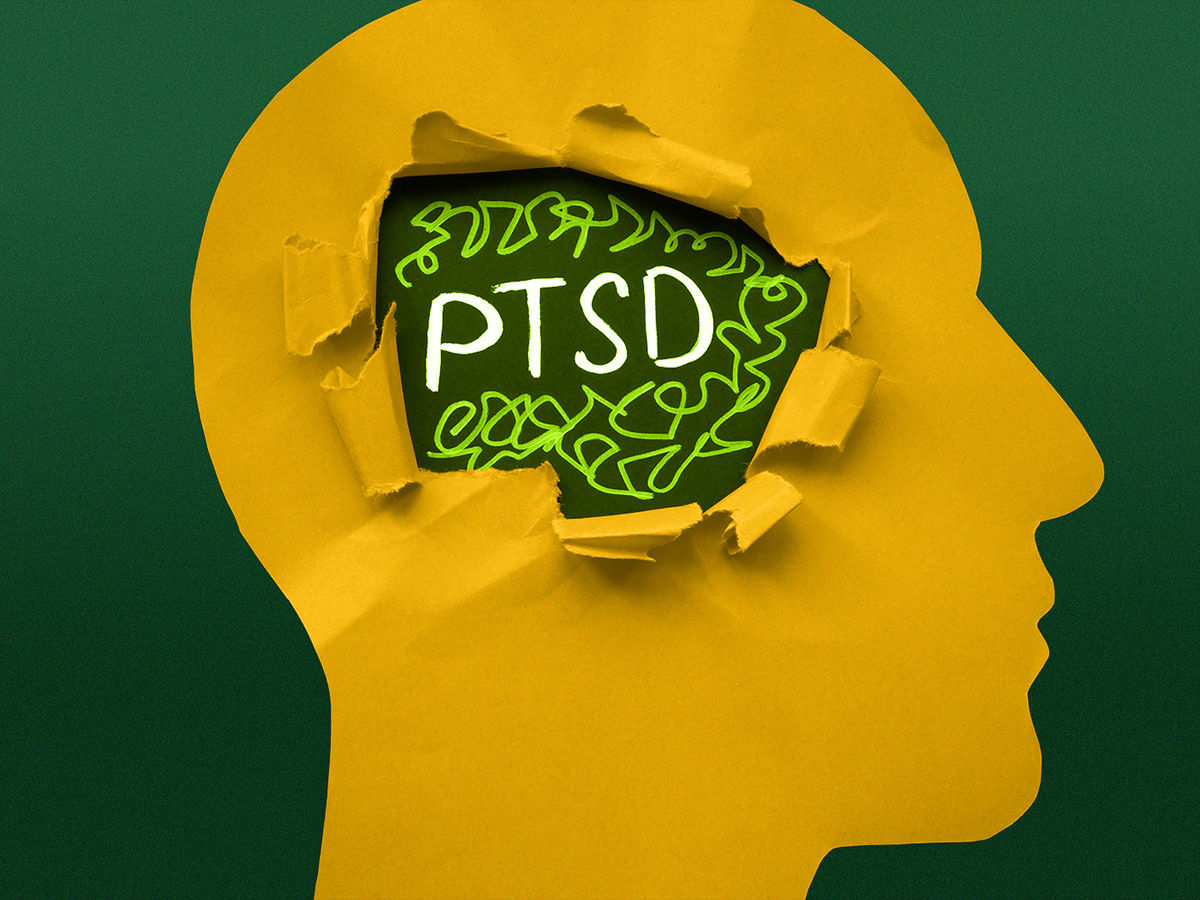 PTSD impacts one’s brain and sleep and can create emotional and cognitive challenges for an individual.Trauma does not always end when the danger is over. For many, the body and brain remain locked in survival mode, long after the traumatic event has passed. This is the painful reality of post-traumatic stress disorder, a condition marked by the brain’s inability to properly process and resolve trauma, leaving individuals emotionally stuck in fear, guilt or shame.
PTSD impacts one’s brain and sleep and can create emotional and cognitive challenges for an individual.Trauma does not always end when the danger is over. For many, the body and brain remain locked in survival mode, long after the traumatic event has passed. This is the painful reality of post-traumatic stress disorder, a condition marked by the brain’s inability to properly process and resolve trauma, leaving individuals emotionally stuck in fear, guilt or shame.
A University of Alabama at Birmingham expert unpacks the complexities of PTSD, its impact on the brain and sleep, and how individuals can navigate emotional and cognitive challenges through treatment.
“Individuals may find themselves easily startled or constantly hypervigilant to threat,” said Merida Grant, Ph.D., a trauma expert and associate professor in the UAB Department of Psychiatry and Behavioral Neurobiology. “This heightened threat response alters how they perceive and respond to otherwise harmless situations, often interpreting them as dangerous.”
Why some individuals develop PTSD while others do not
Not everyone exposed to trauma develops PTSD, and understanding why could unlock better prevention and treatment. According to Grant, coping styles play a crucial role.
“Those who rely on escape or avoidance are more likely to develop PTSD, while individuals who face their fears through approach-based behaviors often find a path to healing,” Grant said. “Early life stress or previous trauma in adulthood can increase vulnerability by reshaping brain structure and function through prolonged exposure to stress hormones.”
The effects on the brain and sleep
PTSD is more than an emotional struggle — it physically rewires the brain, altering how fear is processed, memories are stored and emotions are regulated. Key brain regions affected include the amygdala, bed nucleus of the stria terminali, prefrontal cortex and hippocampus.
The amygdala acts as the brain’s alarm system, detecting threats and triggering fear. The BNST helps maintain prolonged anxiety and vigilance. The prefrontal cortex regulates emotions and decision-making but can be impaired in PTSD, making it harder to control fear. The hippocampus manages memory and helps distinguish past experiences from the present; changes here can cause flashbacks and intrusive thoughts.
“Heightened amygdala and BNST activity lead to increased anxiety, startle response and hypervigilance,” Grant said. “These reactions are often followed by avoidance behaviors as individuals try to cope. Changes in the medial prefrontal cortex impair emotion regulation, while alterations in the hippocampus disrupt memory.”
Sleep disturbances are another hallmark of PTSD. Increased autonomic arousal and anxiety contribute to insomnia, vivid dreams and recurring nightmares.
“Individuals may struggle with falling asleep due to rumination, while others wake in the middle of the night after distressing dreams,” Grant said. “These disruptions in sleep fuel exhaustion and intensify negative mood and overall mental health symptoms.”
Emotional and cognitive impact
Trauma does not just affect feelings; it disrupts the brain’s ability to regulate emotions. This regulation depends on the communication between the medial prefrontal cortex and the limbic system.
“Trauma is a form of severe, chronic stress that can cause atrophy in the mPFC, while the amygdala may become enlarged,” Grant said.
When this connection breaks down, it can result in emotional responses that are either heightened or blunted, both of which can strain relationships and interfere with daily life. Trauma can reshape how a person views the world.
“Before trauma, individuals often see the world and others as safe or positive,” Grant said. “Afterward, that worldview can shift dramatically, with people and places perceived as threatening or harmful.”
This profound change can impact a person’s sense of identity and their place in the world.
Treatment and recovery
Effective, evidence-based treatments can help individuals reframe thought patterns and reduce PTSD symptoms.
“One of the most successful approaches is cognitive processing therapy, a trauma-focused, time-limited therapy that guides patients in identifying and challenging ‘stuck points,’” Grant said. “These stuck points reveal beliefs that keep them emotionally trapped, often tied to avoidance of trauma-related triggers.”
Research shows that those who complete cognitive processing therapy perform better than 89 percent of untreated individuals at post-treatment and maintain gains at follow-up. Medications play a key role.
“Selective serotonin reuptake inhibitors and serotonin-norepinephrine reuptake inhibitors are the most effective pharmacological options, with SSRIs generally recommended as the first line of treatment,” Grant said.
According to guidelines from the American Psychiatric Association and the National Institute for Health and Care Excellence, fluoxetine, paroxetine, sertraline and venlafaxine are commonly prescribed for PTSD.
“It is important to always consult a health care professional before starting or changing any medication to ensure it is safe and appropriate for your individual needs,” Grant said.
While PTSD-focused research continues to evolve, ongoing work and research will contribute to the broader understanding of trauma’s impact on the brain.